See how our kitchens have been brought to life in our customers' homes.

Our kitchen designers share their best breakfast bar ideas
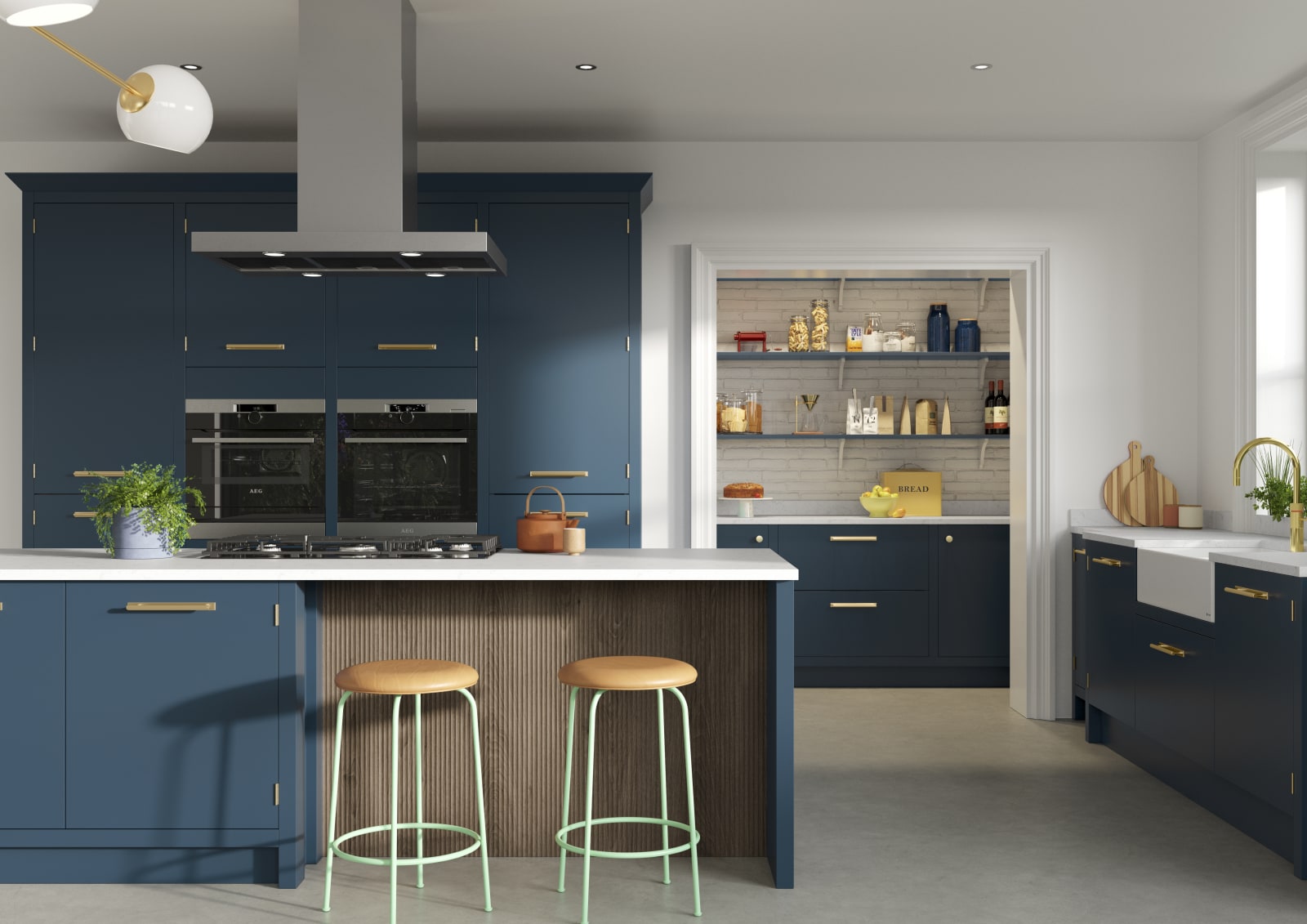
A breakfast bar is a raised counter in a kitchen that has room on one or more sides for seating.
While this setup is usually to save space in small or medium-sized kitchens, it also adds a designer touch to your home with multifunctional benefits - and works incredibly well in oversized kitchens.
Installing a breakfast bar transforms your kitchen by making the most of the floor space available, while ensuring it looks and feels on-trend.
Done in an effective way, a breakfast bar area will add value and instantly elevate your kitchen design.
Here are some kitchen breakfast bar ideas, as well as tips on how to make it functional for your family’s needs.
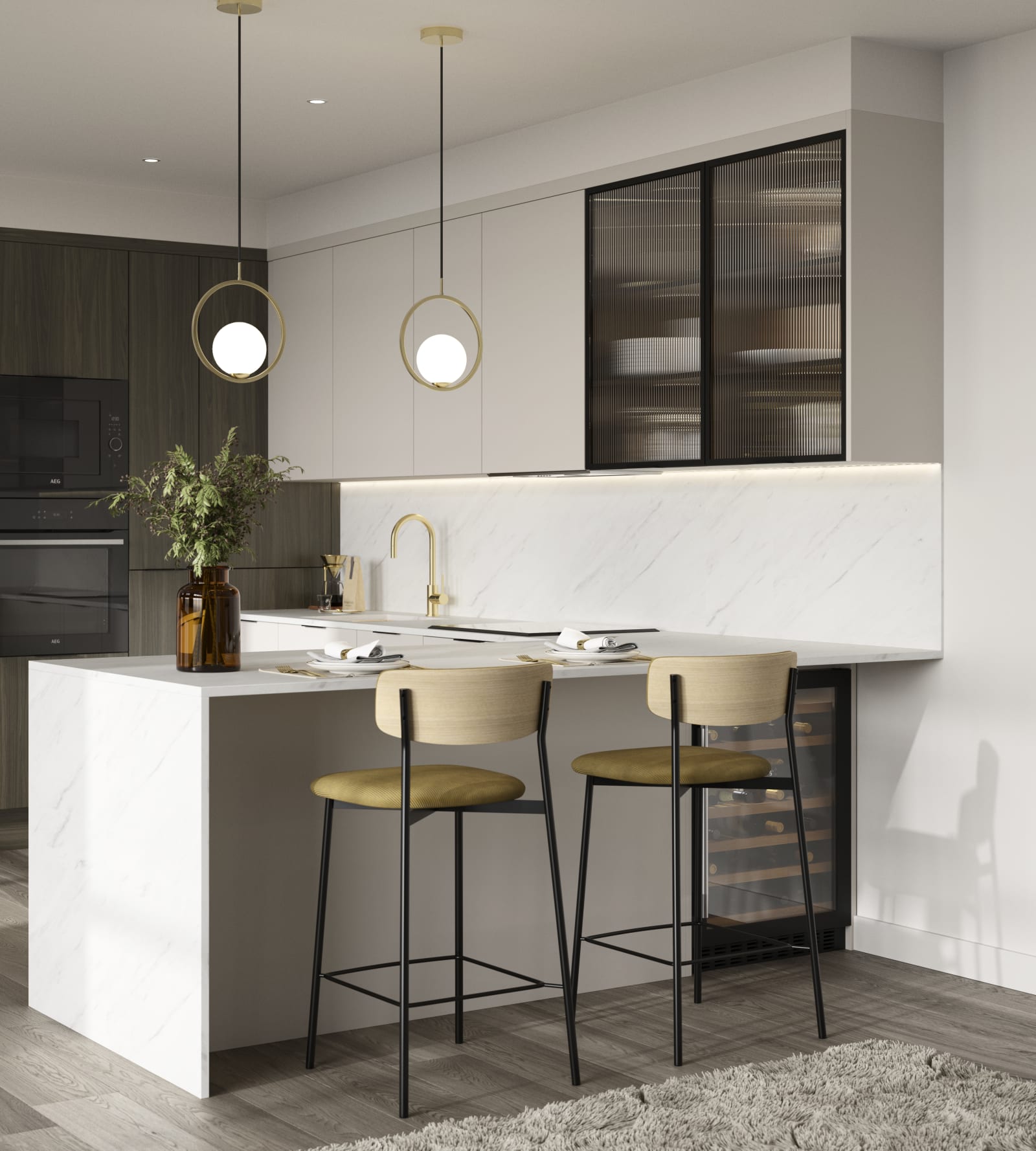
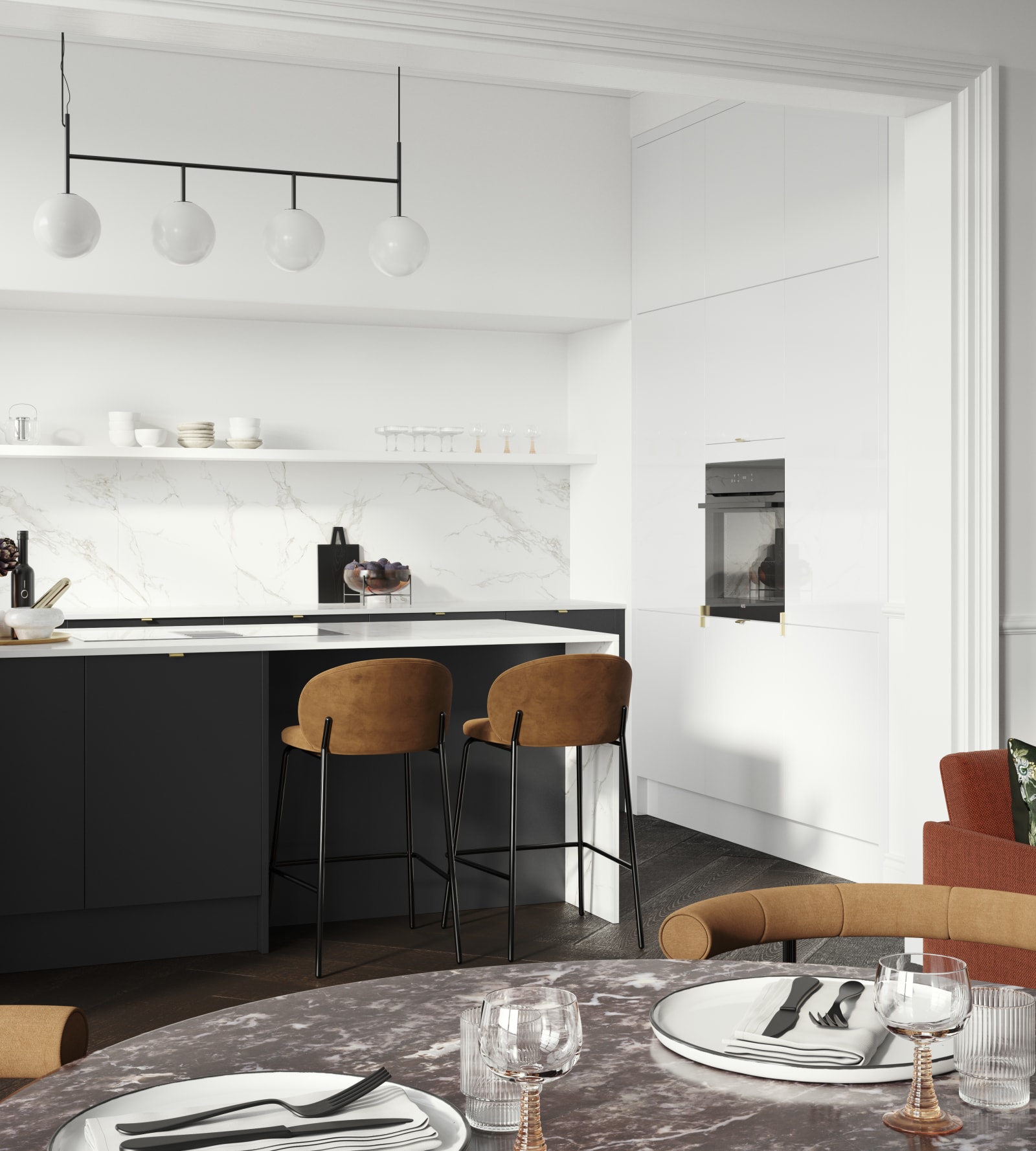
If you’re deciding whether a breakfast bar is worth the investment, here are a few reasons to give it some serious consideration:
A breakfast bar has to be both beautiful and functional, and it should add practical value without blocking the natural flow of your kitchen.
Here are the four most important things to consider when including a breakfast bar in your kitchen design and planning.
Firstly, you need to think about how much space you have to add seating to a raised bar area.
The whole point of a breakfast bar is to save space, but if you don’t have the right layout, it could be hard to achieve the results you want.
However, don’t think that you need to have a large-sized kitchen in order to install a breakfast bar. They’re ideal for small kitchens and take up less room than a table and chair setup.
If floor space is not an issue, you may want to consider some kitchen island breakfast bar ideas that can give you a central zone for casual eating and drinking.
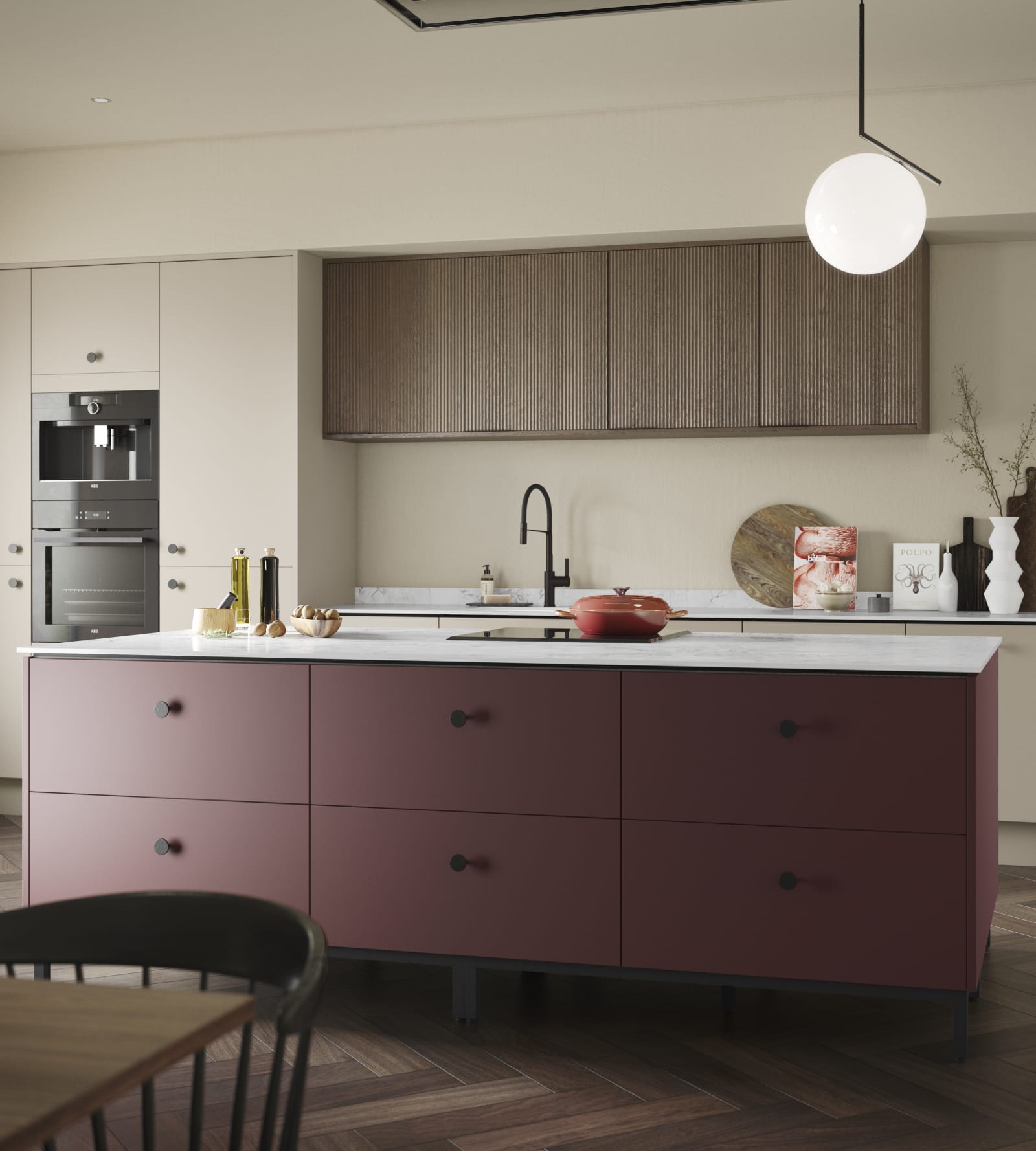
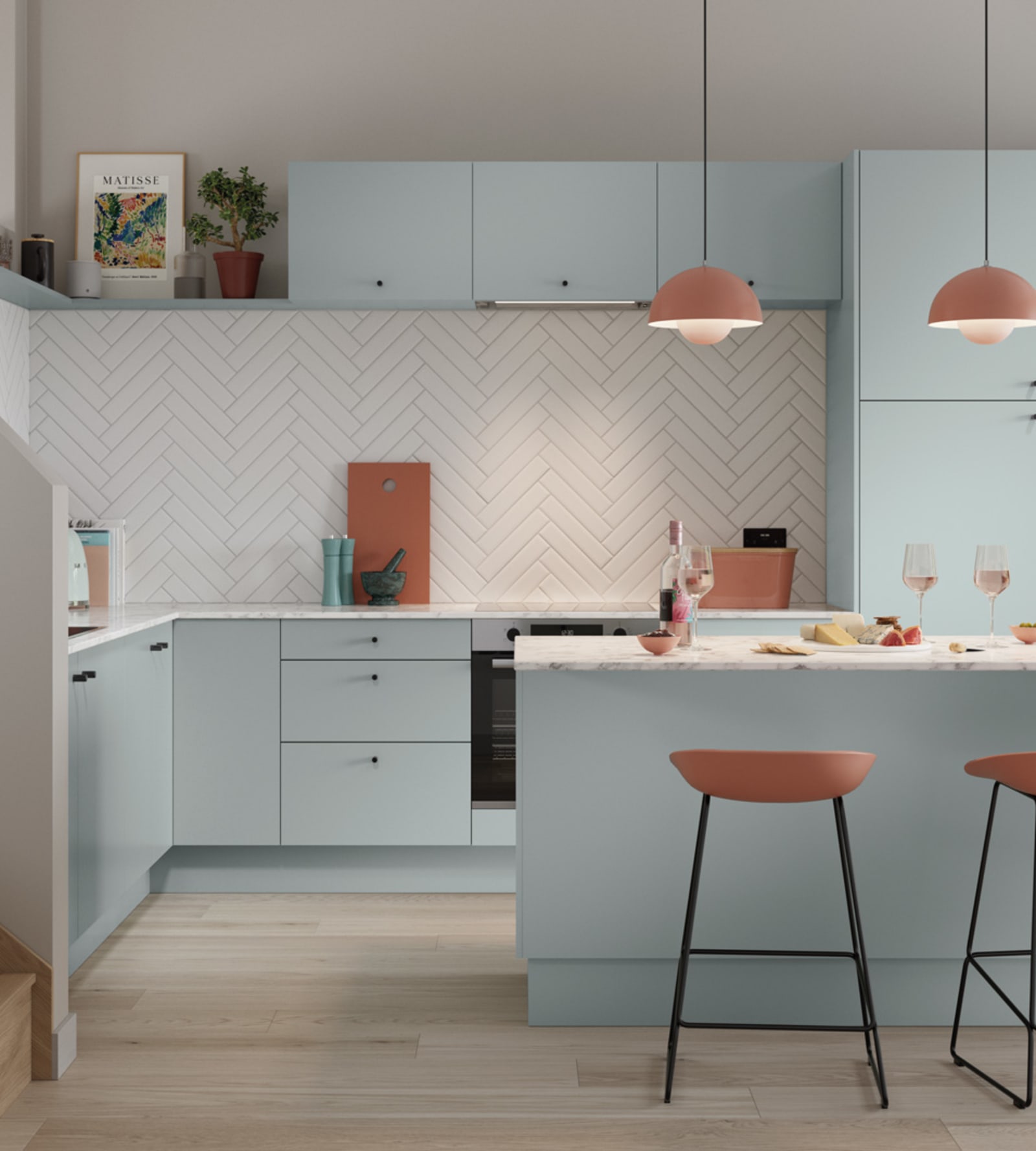
This part is key. Where you position your kitchen bar and seating impacts flow and movement.
The goal is to leave ample room for walkways, and not to obstruct the ‘golden triangle’ or get in the way of appliances.
It’s also worth thinking about which direction your bar area faces. It can be good to position seating to face the main work areas (such as the stove), making it easy to socialise while cooking or preparing food.
Another consideration for your kitchen design is the worktop material, such as quartz, marble, granite, wood or laminate. Remember that some breakfast bar worktops are better for spills and stain resistance.
Choose a breakfast bar worktop material that is durable and easy to care for while also meeting your budget requirements.
If you need help deciding which type of worktop is right for you, explore our guide to worktop materials.
Last but not least, don’t overlook the possibility of storage. Kill two birds with one stone and make the most of the space beneath your bar area.
Shelving, drawers or cupboard space will maximise your kitchen’s storage potential, which can help you keep your home organised.
This includes any unused space at the end of your breakfast bar, which can be great for adding corner cupboard/drawer units, or even a stylish feature such as an integrated wine rack.
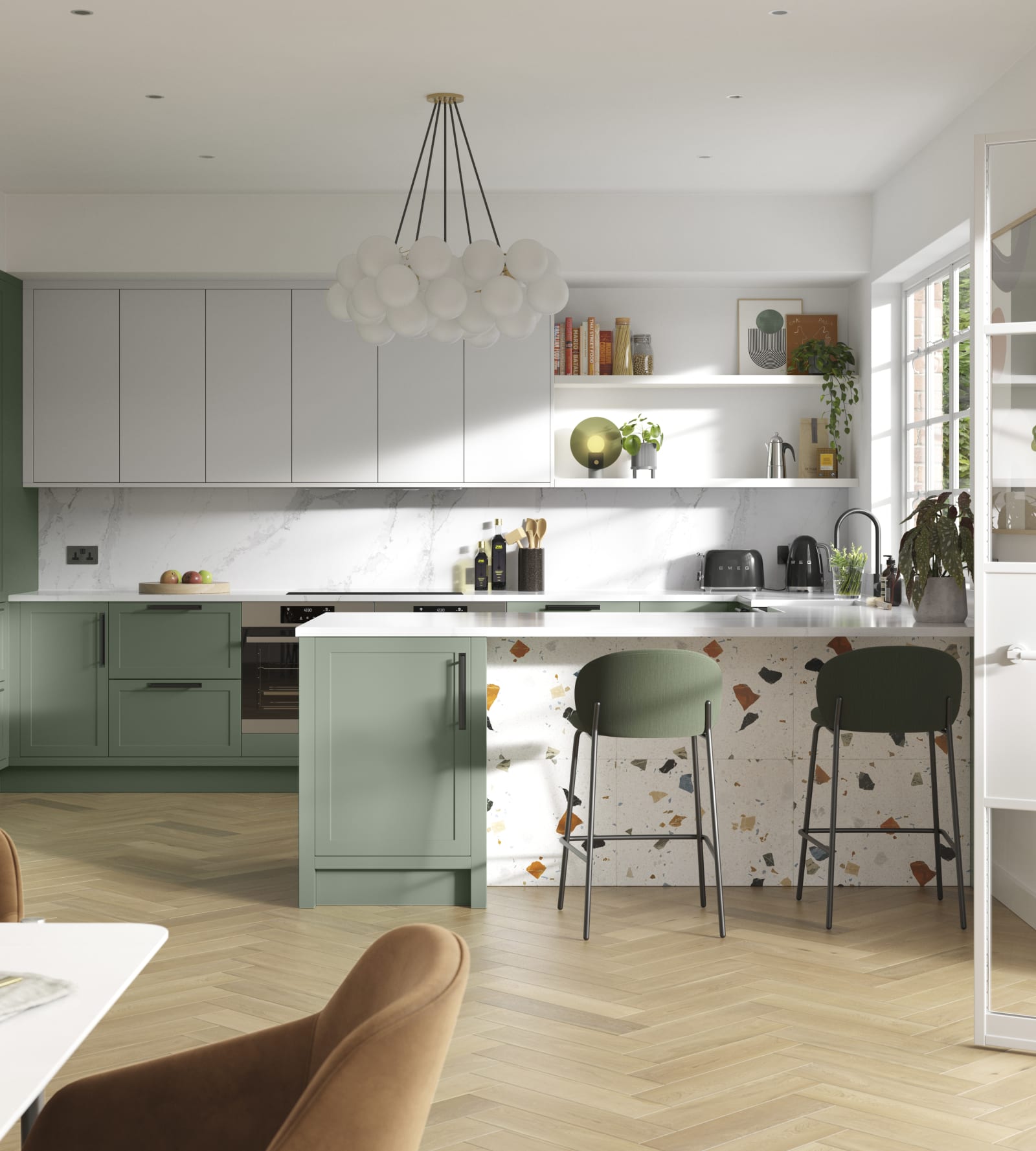
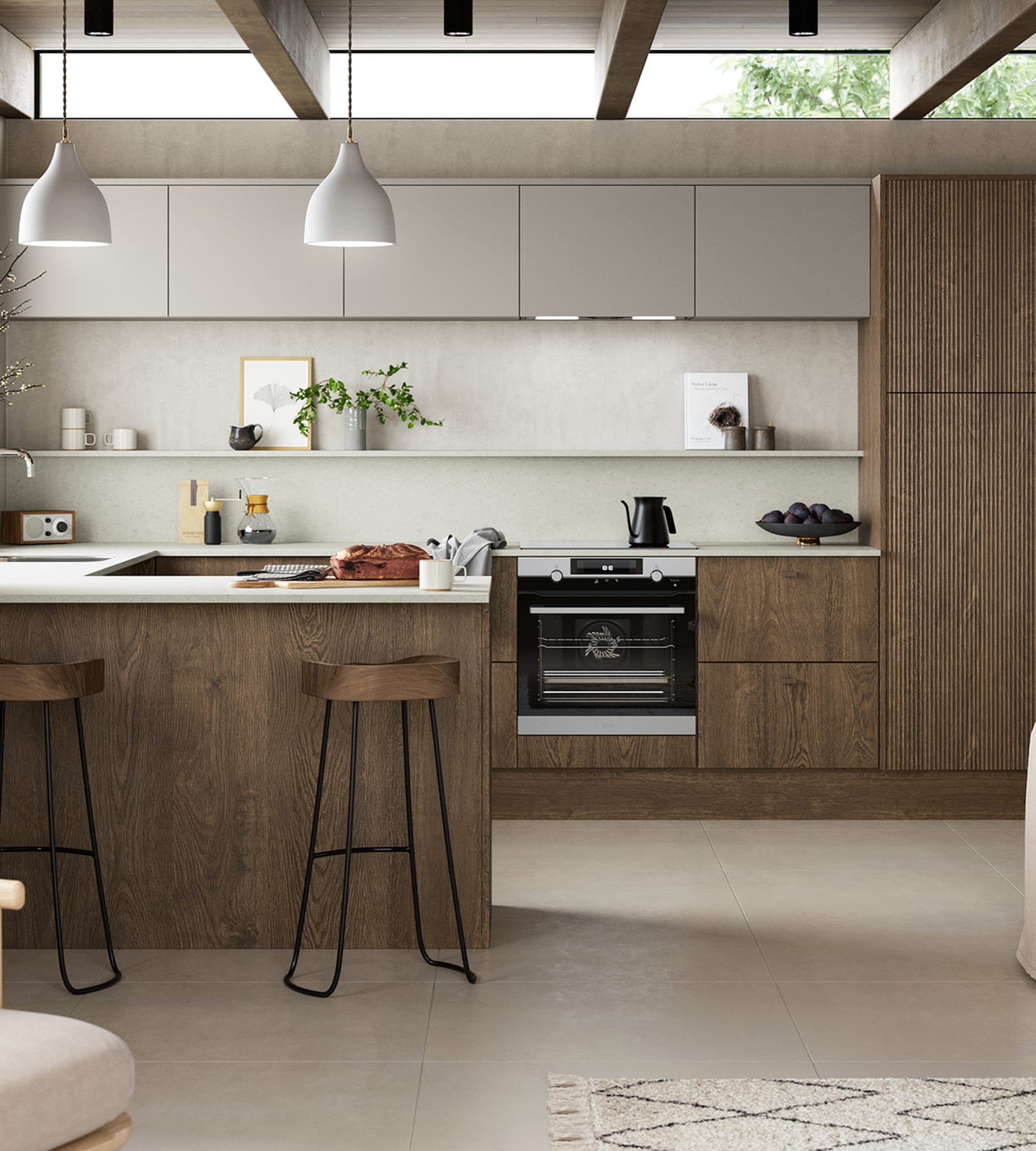
Choosing the right style of breakfast bar depends on a lot of different factors. After considering space, positioning, breakfast bar worktop material and storage, aesthetics come into play.
You will also need to think about how your breakfast is going to be used day to day. It could be solely a pitstop for snacks and conversation, or it could moonlight as a drinks bar in the evenings.
An island breakfast bar could also double up as a food preparation zone or even a central placement for your hob.
Here are some of the different styles that could work in your kitchen:
A raised bar area is ideal if you want to keep the kitchen and breakfast area separate.
Using a plinth on one edge of the working space or kitchen island means having a clear and designated dining zone, and also prevents the risk of cross-contamination.
Not only is this style more formal, making it ideal for families looking to use this space for serving meals regularly, but it’s suitable for guests.
With the use of mixed materials, you can elevate your kitchen and turn it into a design feature.
A lowered breakfast bar works very much like a raised bar area, except it drops down, which again, acts as a zoning method to separate food prep and dining.
Another reason you may consider this is to create a more comfortable table and seat height. For families with children, this is often more practical and offers an additional element of safety.
The lip from a lowered breakfast bar also provides a suitable location for electric sockets, which is another function that’s important to a busy household.


Floating or cantilevered tables extend outwards from your work surface, and are a great solution if you have some additional space to do this.
Extending away from a kitchen island or worktop shouldn’t disrupt the traffic flow, so bear this in mind during the planning phase.
If you don’t want this to be a permanent fixture, it could be worth looking at a bar table that slides in and out as and when you need to use it.
For modern kitchens that double up as workspaces or family living spaces, being able to adapt the room to your needs can be an attractive feature.
One of the best kitchen breakfast bar ideas for small homes is a corner or wall-mounted table. If you don’t have room for an island or you don’t have a lot of workspaces, optimise your wall areas instead.
While this is an ergonomic solution that doesn’t allow for multipurpose benefits (such as storage), it works great for everyday dining.
For floating tables to work, they need to be carefully engineered for stability, so this would not work on plasterboard walls. However, there are many breakfast bars with stable legs that still look seamless and help you save space.
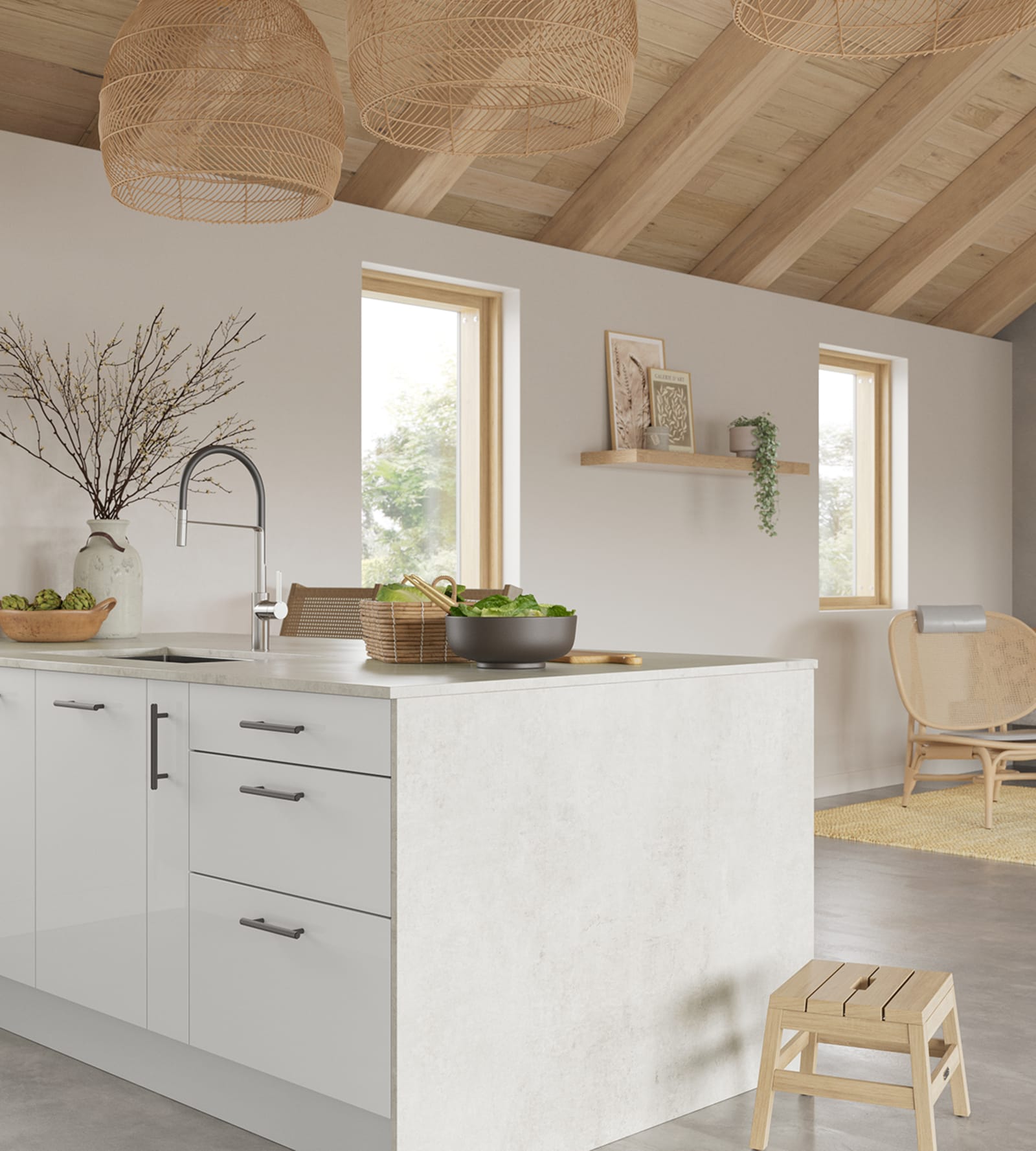

An L-shaped kitchen can create an efficient space for working, giving you the desirable ‘triangle’ of appliances while ensuring maximum flow and movement between workstations.
This provides a convenient setup for a breakfast/dining area too, with seating opportunities on two sides.
Not only is the L-shape conducive to the ‘cook, clean and store’ functions of a busy kitchen, but it turns a long, straight peninsula into a 45-degree profile, making your breakfast zone more sociable.